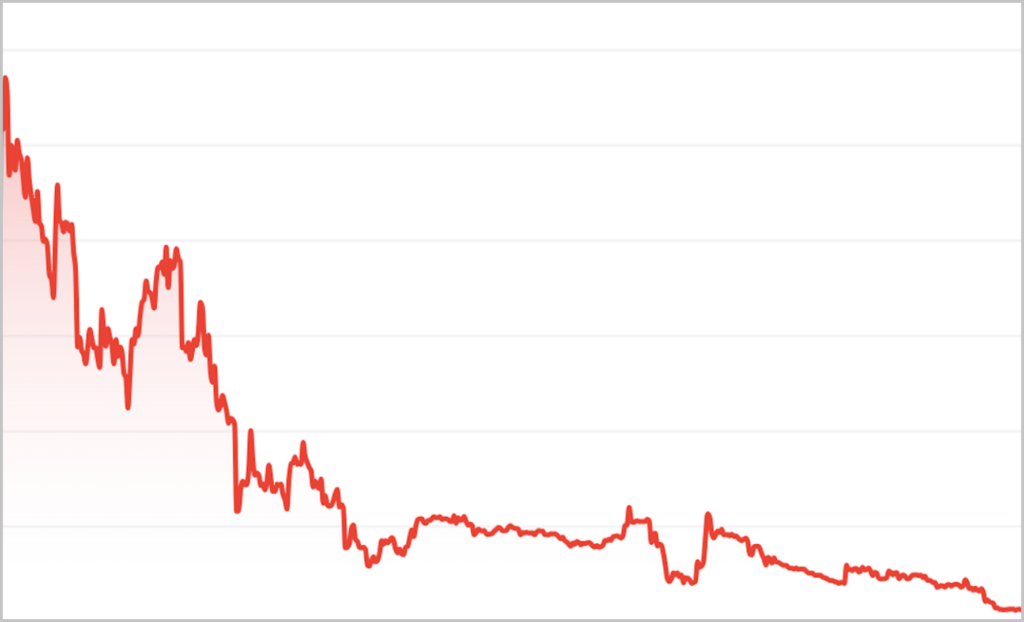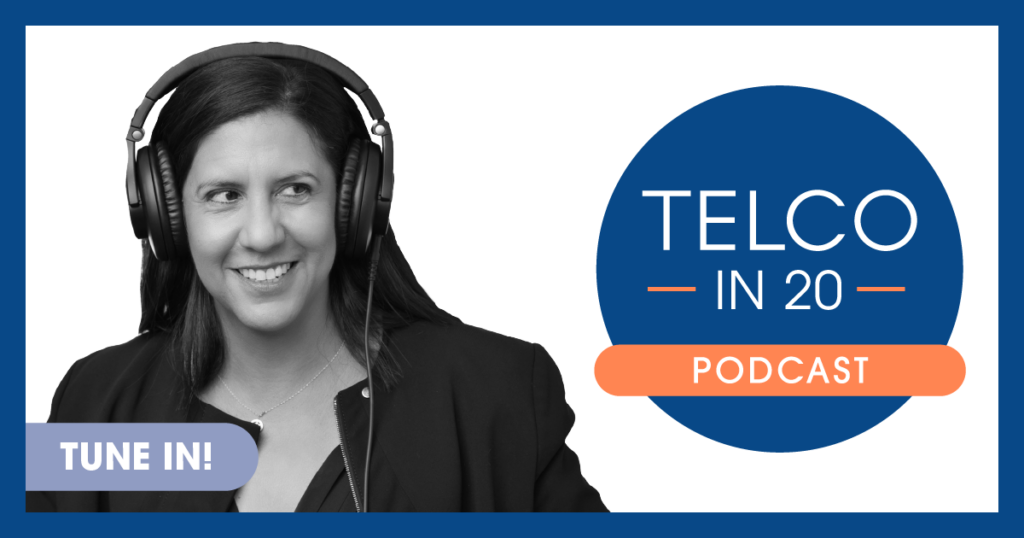Dead Vendor Walking – What to do when your vendor is TOAST
There is a lurking danger in telecom software procurement that I like to call “Dead Vendor Walking.” These aren’t just companies that are technologically behind; these companies are financial time bombs masquerading as viable partners. Akin to the phrase “Dead Man Walking,” Dead Vendor Walking refers to telco software providers on the edge of financial collapse. Your mission? Sidestep them and align with vendors that are not just tech-savvy but also financially bulletproof.
For this blog, I want to sharpen your executive eye so you can be sure you’re aligned with fiscally strong vendors, not those teetering on the edge. As you put together 2024 budgets and place bets on where to allocate spend, be sure to include an assessment of the financial viability of the vendors that support you in critical areas. As usual, I am here to help you out!

If so, it’s time to create an exit strategy.
Be Like VPC
It’s always a good idea to take a hard look at the roster of vendors supporting your core areas and ask: do these vendors have staying power? Remember, the applications you’re procuring aren’t just systems you’ll use for a few months; in most cases, these are products that you’ll use for YEARS. The partners you select need to be able to go the distance.
When the economy is roaring it’s easy to get access to new capital. But that’s not the state of the world at the moment. Interest rates are high, and even private equity firms that finance deals with debt are having a tough time gaining access to capital. Venture capitalists are asking tougher questions of their companies, and they are being more conservative in the bets they’re placing. For telco software companies out there that aren’t profitable and are running low on cash, this situation puts them into a bind. They must conserve their cash, and if required, service their debt. Only profitable, cash-rich companies tend to weather these conditions well, and weaker competitors can face fire sales, bankruptcy, and even death.
How do I know? Remember, I’ve been on the hunt for telco software companies to buy. Since I started looking in 2021, I’ve never seen a longer list than today’s list of companies ready to sell to TelcoDR. It’s long because some of these companies are in financial trouble and their owners need to get out fast.
So, how do you know if your vendor is in trouble? In my experience as a software CEO, I most often see procurement and finance groups take the easiest and most direct approach, which is to monitor and track the vendor’s main metrics, like stock price, revenue, cash position, debt, and profitability. But be sure to track more than the most recent values; if the company has been around for a while, ask what these numbers were two or three years ago. You need to track these key financials to make sure the vendor can survive the journey to support you for years to come. To this day, the thought of Vodafone’s Procurement Company (VPC) still sends shivers down my spine. When I was CEO of Optiva (TSX: OPT.TO), VPC routinely performed what felt like a forensic audit of our financials every quarter. So, be like VPC and go deep.
However, sometimes those key metrics don’t uncover the full picture. Use these three questions to dig deeper:
1: How much are you investing in research and development?
Ask your vendors how they’re dealing with the inevitable technological shift that’s come to telco. Almost all vendors should be updating their products to use the public cloud and incorporate artificial intelligence (AI). Maintaining competitiveness against competitors will be crucial, and investment will be required. If the company is in financial distress, it will be forced to balance the need to innovate with the financial realities of the business. If it says they are developing new capabilities, ask for delivery dates and demonstrations of the new product. Monitor year-over-year levels of investment, and look for proof that the R&D group is actually delivering on the new tech. Anyone can put out a press release; is the company producing actual innovation?
2: How many customers do you have today, and how many have exited in the last 12 months?
It’s suuuuper easy to hide behind a list of departed customers’ logos. When TelcoDR looks at buying a company, we interview the seller’s customer roster logo by logo, customer by customer, and ask if there has been any indication of the customer swapping off the product. We compare previous years’ revenue to current and projected revenue. We ask: has the customer issued requests for proposals (RFPs) that the seller hasn’t been invited to? Has the customer actively started an exit project? Telco customers take years to move off software, so it’s really easy to hide behind what seems like an active revenue stream. Dig deeper, and compare several years of revenue to see if the annuity is declining. If so, that’s a telltale bad sign, as it means the vendor has already started discounting to keep the business or the customer has started to ramp down usage as it exits the product. Another way to check: do reference calls with multiple customers and ask if they have been reducing their spend with the vendor over time, and why.
3: What’s the average revenue per employee?
Is your vendor a software company, or a consulting company? Telcos need to be buying software products, not big consulting projects that take a big team to maintain. Unfortunately, to date most telco software has been heavily customized, meaning you need a small army to run it. Revenue per employee (plus contractors!) will give you a clue if the company can support you. Healthy enterprise software companies typically have revenue per employee of $200,000 to $300,000 or more. For truly SaaS companies, you’ll see even higher values (for comparison, as of 2022, Oracle’s revenue per employee was at $378k; Salesforce’s at $554k). In contrast, consulting companies are typically at $175,000 or lower, which means they have a smaller cushion to maintain the employee base (for example, as of 2022 Amdocs was at $175k, Optiva at $160k). When revenue drops, the shit hits the fan FAST, and these vendors have to release employees immediately. This leaves customers in a dangerous spot, as knowledge walks out the door and there are fewer knowledgeable team members to do the work. Knowing the revenue-per-employee ratio can help you assess your vulnerability to this kind of scenario. Depending on what you learn, you can start proactively planning your exit (more on this below), instead of going down with your vendor’s sinking ship.
Ok, so your vendor is in a death spiral. Now what?
So, you did your research. You asked the questions, and you’ve determined the situation is NO BUENO. What’s your move?
#1. Don’t pick them.
If you haven’t signed a deal yet, DON’T—no matter how great the price. When companies are in distress, they may not have the right talent in-house because they have to make tradeoffs between paying the cloud bill and keeping staff. Better to just avoid these kinds of vendors. The low, low cost might be attractive, but when they are forced to sell the company, go bankrupt, or just shut down, you will be left holding the bag regardless of the price you paid. Don’t put yourself in a position where you’re going to have to do an emergency swap project. Start by not inviting them to your RFP process in the first place.
#2. Use your leverage to negotiate a really good deal.
If you’re already a customer, you have an opportunity to save a ton of money. Shrinking revenue is a sign that customers are switching to other platforms. To avoid losing the install base, dying companies will offer deep discounts: 50%, 75%, even 90%. These vendors DO NOT want to lose your business and they definitely don’t want to lose your logo. For all you procurement leaders out there, this is GREAT news for you. Vendors like these aren’t part of your long-term strategy, so you can go after them with your sharp pencil and negotiate a big discount. Go. To. Work.
#3. Create an escape plan NOW to get out in six months or less.
You don’t want to be the last customer out the door, so create your exit plan. There are two ways to create an exit plan. One approach is to aggregate your workloads into one of your bigger suite vendors—like Amdocs, Netcracker, Ericsson, etc. They’re always eager to get more of your business and will offer super competitive (even free!) pricing to get you enmeshed in their product suite. Once they consolidate and expand their position, they’ll make their money on consulting and change orders.
If you’re ready for a breath of fresh air (and if you read this blog, you must be!), then another approach is to try one of the new cloud vendors that are eager for your business. Like, for example, Totogi, the Charging-as-a-Service company where I’m acting CEO. Want to try before you buy? No problem: sign up for a penny on AWS Marketplace. You can get a pilot up and running in days to see how it works. Love it? Bring your business over and pay as you grow. Doesn’t work for you? Cancel anytime. These new free-trial, easy-set-up, public cloud-based solutions are great options that you should absolutely consider. Plus, it’s a great way to dip your toe in the public cloud water to get a taste of this new tech to see if it will work for you.
Get started today!
Economic tough times call for due diligence. Start by taking a look at your small, legacy vendors—especially those that have been slow to embrace the public cloud. They might be in financial trouble: no cash, heavy debt, fleeing customers, and shrinking revenue. If they don’t have the R&D to invest in transformative tech right now, they (and your business) are going to get left behind.
If that describes your vendors, make their problem your opportunity—for easy money in the form of discounts and for the catalyst you need to experiment with cloud vendors that offer 21st-century tech. Need help? I’m here for you! I’ve restructured more than 20 companies from bankruptcy (most recently, Kandy) to near bankruptcy (Redknee/Optiva), and have created emergency vendor swap-off plans to save money and save the business. I’ve never missed a date and the moves have had minimal customer impact. Don’t wait. Be proactive and get your new year started on the right foot!
Listen
Telco stocks were once a golden ticket. Can they return to their former glory? Recurve Capital Founder Aaron Chan sees a path for the public cloud to help telcos get back in the game.
Watch
Developing true cloud-native functions is just the first step for vendors looking to provide the most appropriate software-as-a-service (SaaS) applications to cloud-friendly telecom operators, but transparent and appropriate pricing is just as important.
Read
Many cloud software companies in the telecom sector look more like services companies than developers of products.


 Get my FREE insider newsletter, delivered every two weeks, with curated content to help telco execs across the globe move to the public cloud.
Get my FREE insider newsletter, delivered every two weeks, with curated content to help telco execs across the globe move to the public cloud.